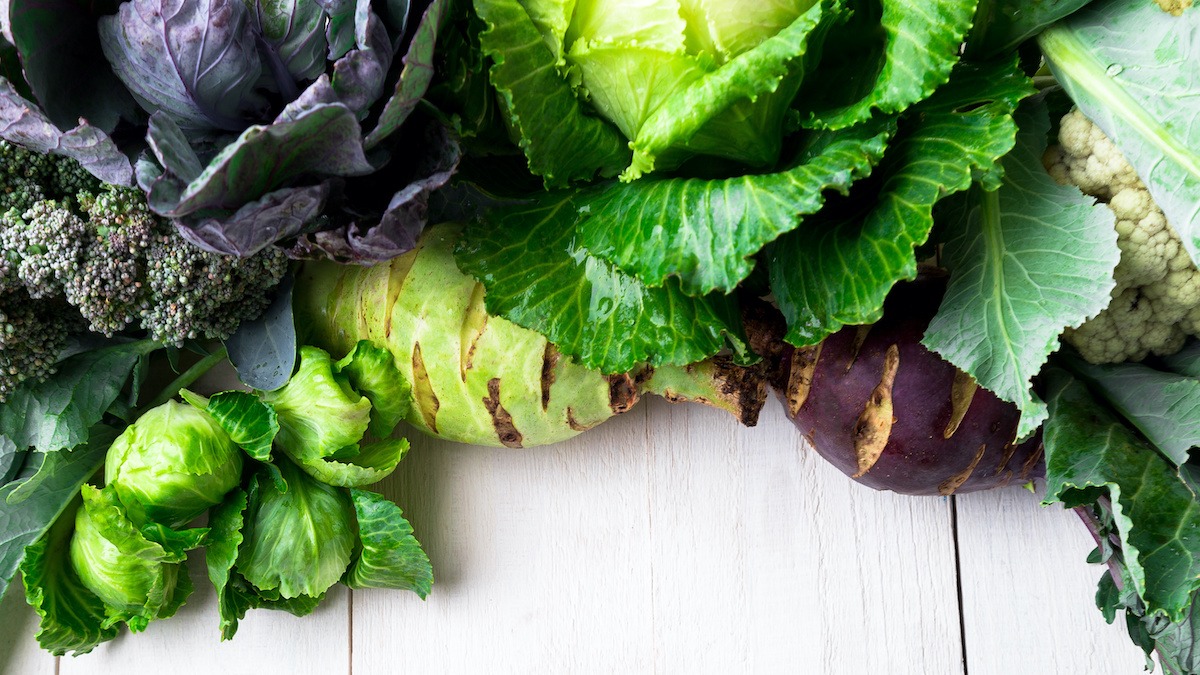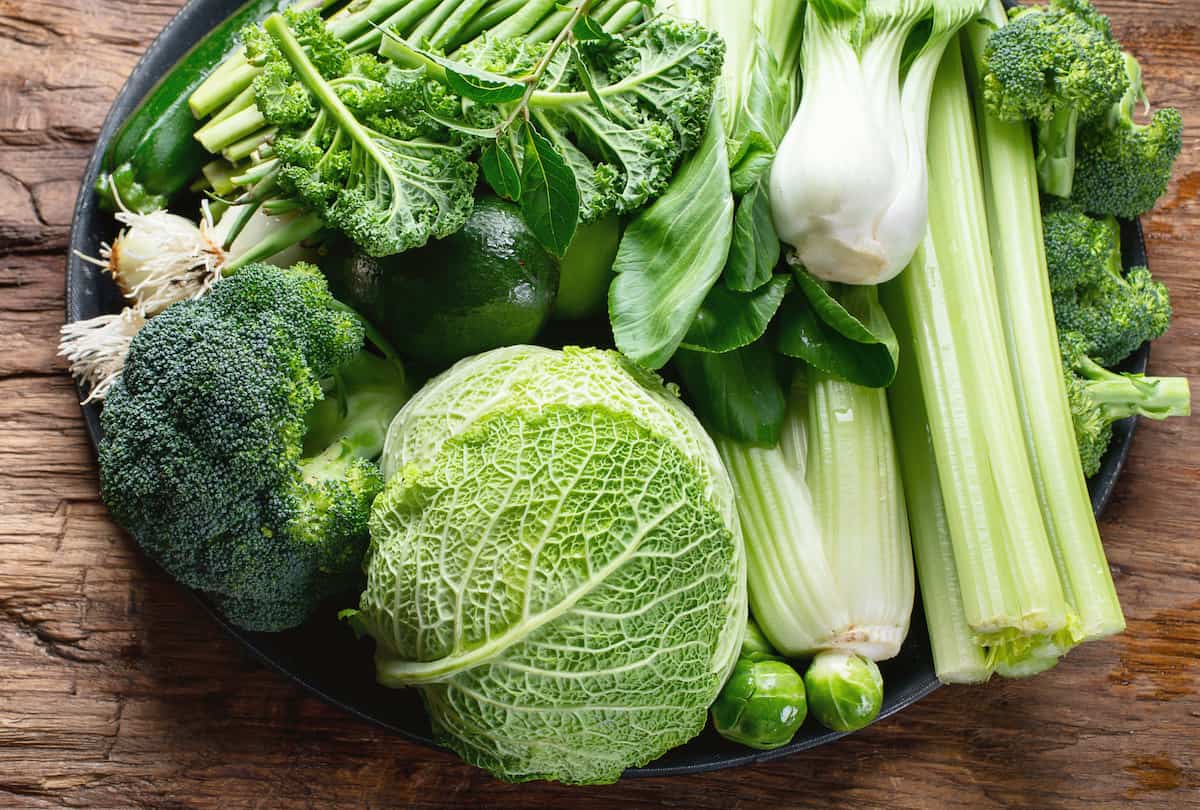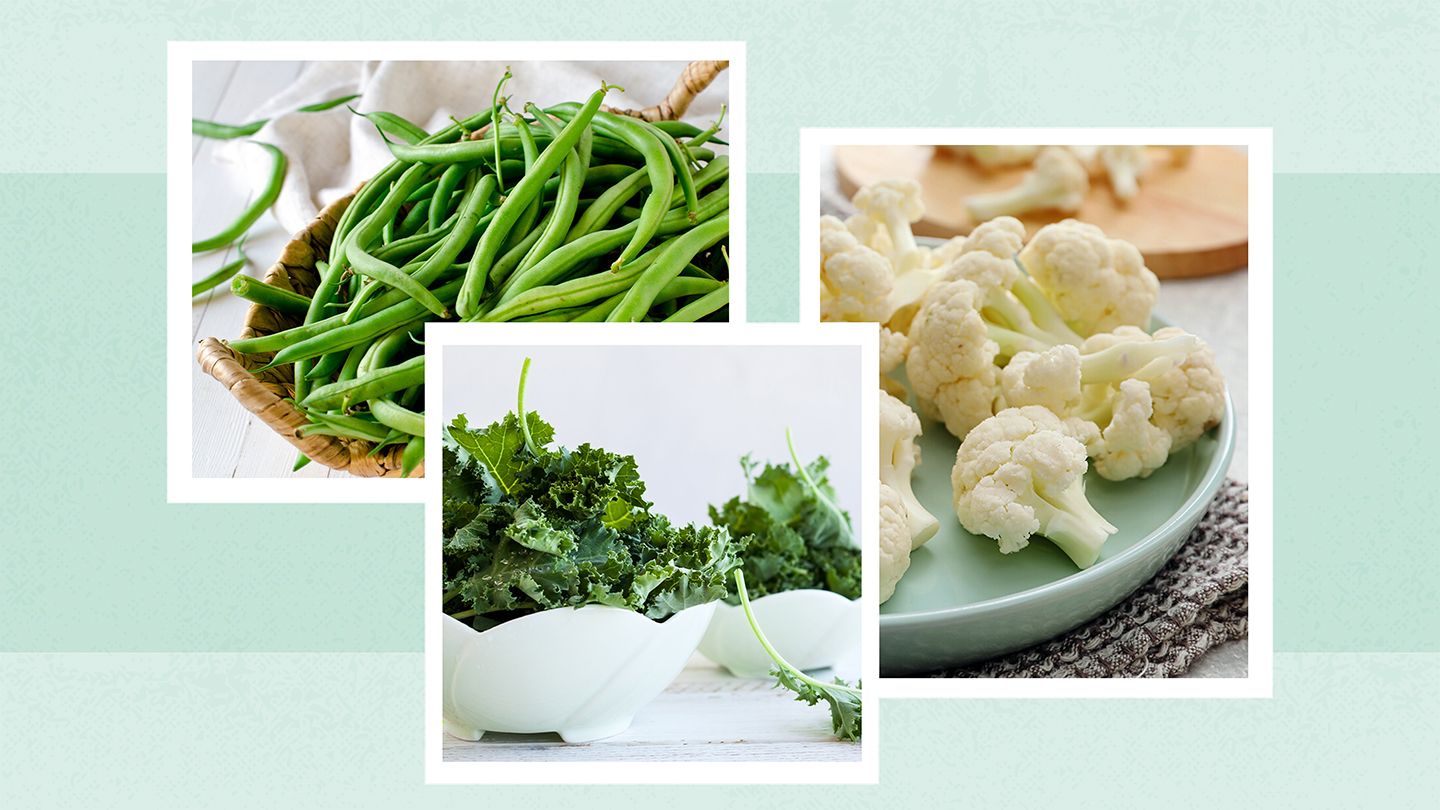Home>Gardening News and Trends>Latest News>What Vegetables Are In Gumbo


Latest News
What Vegetables Are In Gumbo
Modified: January 22, 2024
Discover the latest news on what vegetables are commonly found in gumbo. Explore this flavorful and nutritious dish loaded with fresh ingredients and diverse flavors.
(Many of the links in this article redirect to a specific reviewed product. Your purchase of these products through affiliate links helps to generate commission for Chicagolandgardening.com, at no extra cost. Learn more)
Table of Contents
Introduction
Gumbo is a classic Southern dish that is as diverse as the region it originates from. This hearty and flavorful stew has African, French, and Spanish roots, making it a true melting pot of flavors. While gumbo is typically known for its rich combination of meat and seafood, vegetables also play a crucial role in this beloved dish.
In this article, we will explore the various vegetables used in gumbo, from traditional options to unique additions. Whether you’re a vegetarian, vegan, or simply looking to incorporate more vegetables into your gumbo recipe, we have you covered.
But first, let’s delve into the background of gumbo and understand why it has become such an integral part of the Southern culinary landscape.
Originating in Louisiana, gumbo was initially a dish created by West African slaves who used okra as a thickening agent and combined it with other locally available ingredients. Over time, the dish evolved with the influences of French and Spanish cuisines, resulting in the gumbo we know today.
Background of Gumbo
Gumbo is deeply rooted in the history and culture of Louisiana. It is often referred to as the official state dish, and its origins can be traced back to the 18th century. The word “gumbo” itself is derived from the West African Bantu word for okra, “ki ngombo,” which is a key ingredient in traditional gumbo recipes.
The dish is a testament to the diverse influences that shaped Louisiana’s culinary landscape. African, French, and Spanish cultures all played a role in the development of gumbo. African slaves brought over their cooking techniques and ingredients like okra, while French and Spanish settlers added their own flavors and ingredients, such as roux and tomatoes.
Initially, gumbo was prepared by combining whatever ingredients were available at the time. It was a dish born out of necessity and resourcefulness, making use of ingredients like meat, seafood, vegetables, and spices in a flavorful stew. Gumbo quickly became a staple in Louisiana households, especially during festive occasions like Mardi Gras and family gatherings.
Today, gumbo has evolved into various regional styles, with each reflecting the unique culinary traditions and flavors of different communities in Louisiana. The two main types of gumbo are Creole gumbo and Cajun gumbo. Creole gumbo tends to be more elaborate and incorporates a wider range of ingredients, while Cajun gumbo is characterized by a simpler, rustic approach.
Gumbo has also gained popularity beyond the shores of Louisiana. It is now celebrated as a beloved dish across the United States and even internationally. Its rich flavors and comforting nature have made it a favorite among food enthusiasts, and many variations of gumbo can be found in cookbooks and restaurants around the world.
Traditional Ingredients in Gumbo
Traditional gumbo consists of a flavorful combination of meats, seafood, vegetables, and spices. These ingredients work together to create a rich and complex flavor profile that is the hallmark of this beloved Southern dish.
Meats: Traditional gumbo often includes meats like chicken, sausage, and seafood. Chicken adds a hearty and succulent element to the dish, while sausage provides a depth of flavor. Seafood options may include shrimp, crab, and sometimes even crawfish.
Seafood: Seafood is a popular addition to gumbo, particularly in coastal regions. The choice of seafood can vary depending on availability and personal preference. Shrimp, crab, oysters, and even fish can be used to add a delightful seafood flavor to the stew.
Vegetables: Vegetables play a vital role in gumbo, providing freshness and balance to the dish. The most common vegetables include onions, bell peppers, and celery, often referred to as the “holy trinity” of Cajun and Creole cooking. This aromatic trio adds depth to the gumbo’s flavor profile and serves as the base for many gumbo recipes.
Spices and Seasonings: Gumbo wouldn’t be complete without its medley of spices and seasonings. The most prominent spices include paprika, thyme, oregano, and bay leaves. Creole seasoning, which typically contains a blend of spices like garlic powder, onion powder, cayenne pepper, and black pepper, adds a kick of flavor to the dish.
Roux: One of the defining elements of gumbo is the roux. Made from flour and fat (usually oil or butter), the roux serves as a thickening agent and adds a unique nutty flavor to the gumbo. The darkness of the roux can vary, ranging from a light golden color to a rich dark brown, depending on the recipe.
Broth: A flavorful broth is essential in gumbo to bring all the ingredients together. Chicken or seafood stock is commonly used to create a savory and aromatic base for the stew.
Optional Ingredients: While the above ingredients form the foundation of traditional gumbo, there are also optional ingredients that can be added to enhance the flavor and texture. Some recipes may include okra, tomatoes, file powder (ground sassafras leaves), or Worcestershire sauce for an extra touch of complexity.
Now that we’ve covered the traditional ingredients in gumbo, let’s explore the various vegetables that are commonly used in this iconic Southern dish.
Vegetables Used in Gumbo
Vegetables are an essential component of gumbo, providing both flavor and texture to the dish. They add freshness, color, and a touch of vibrancy to the rich and hearty stew. While the meat and seafood often take center stage, the vegetables in gumbo play a crucial supporting role, enhancing the overall taste and complexity of the dish.
Commonly used vegetables in gumbo include onions, bell peppers, celery, and garlic. These vegetables, known as the “holy trinity” of Cajun and Creole cooking, form the base of many gumbo recipes and contribute to its distinctive flavor profile. Onions provide a sweet and savory foundation, while bell peppers add a subtle tanginess. Celery brings a refreshing crunch, and garlic lends its aromatic qualities.
Aside from the holy trinity, other vegetables are often added to gumbo to enhance its taste and texture. One popular option is okra, which is often included in gumbo recipes for its natural thickening properties. Okra, when cooked down, releases a gel-like substance that helps to give gumbo its signature thickness.
Tomatoes are another vegetable that can be found in some gumbo recipes. They add a gentle acidity and contribute to the overall richness of the stew. However, it’s worth noting that the use of tomatoes in gumbo is more common in Creole gumbo rather than Cajun gumbo.
In addition to the traditional vegetables, some gumbo recipes may also incorporate other vegetables to add depth and variety. For instance, carrots can be included to introduce a touch of sweetness, while corn kernels can provide a burst of freshness and texture.
While these additional vegetables aren’t typically considered traditional components of gumbo, they can be used to create unique variations of the dish. It’s important to note that the choice of vegetables in gumbo can vary depending on personal preference and regional influences.
Now that we have explored the vegetables commonly used in gumbo, let’s take a closer look at the key vegetables that are often featured in this beloved Southern stew.
Key Vegetables in Gumbo
While gumbo recipes can vary greatly, certain vegetables are considered key players in creating the authentic flavors and textures of this beloved Southern dish. These vegetables not only contribute to the overall taste but also add visual appeal and nutritional value to the gumbo.
1. Onions: Onions are a staple in gumbo and provide a sweet and savory flavor base. They help to build depth and complexity in the stew while adding a subtle sweetness. Onions can be diced or sliced depending on personal preference and recipe instructions.
2. Bell Peppers: Bell peppers, particularly the green variety, are another essential vegetable in gumbo. Known for their mild tanginess, they add a slightly acidic and refreshing flavor to the dish. Bell peppers also contribute vibrant color and a satisfying crunch.
3. Celery: Celery adds a distinct earthy and aromatic flavor to gumbo. It provides a subtle bitterness and a refreshing crunch. Along with onions and bell peppers, celery forms the holy trinity of Cajun and Creole cuisine, acting as the flavor base for many gumbo recipes.
4. Garlic: Aromatic and pungent, garlic contributes a powerful and distinctive taste to gumbo. It infuses the dish with a rich, savory flavor and complements the other ingredients. Whether minced, sliced, or crushed, garlic adds depth and complexity to the stew.
5. Okra: Okra is a vegetable that is traditionally used in gumbo for its thickening properties. When cooked, okra releases a gel-like substance that adds body and viscosity to the stew. It also imparts a unique flavor and contributes to the overall richness of the gumbo.
These key vegetables work together to create the foundation of the gumbo’s flavor profile. Their combination provides a harmonious balance of sweetness, tanginess, and earthiness, adding depth and complexity to the dish. Of course, the amounts and proportions of these vegetables can vary depending on personal preference and regional influences.
While these vegetables form the core of gumbo, it’s worth noting that gumbo is a versatile dish, and variations abound. Don’t be afraid to experiment with different vegetables to create your own unique gumbo recipe. Whether you stick with the traditional key vegetables or add a personal twist, gumbo is a dish that welcomes creativity and adaptation.
Other Vegetables Found in Gumbo
While onions, bell peppers, celery, garlic, and okra are the key vegetables in gumbo, there are also other vegetables that can be found in variations of this beloved Southern dish. These additional vegetables add different flavors, textures, and colors to the gumbo, allowing for a diverse and customizable culinary experience.
1. Tomatoes: While not as common in traditional gumbo as some other vegetables, tomatoes can be included in certain versions of the dish. Tomatoes add a touch of acidity and sweetness, contributing to the overall richness of the gumbo. They also bring vibrant red color to the stew.
2. Carrots: Carrots are not traditionally found in gumbo; however, they can be added to introduce a hint of sweetness to the dish. Carrots provide a pleasant crunch and add a burst of vibrant orange color to the gumbo. Some cooks choose to slice them thinly or dice them for even distribution throughout the stew.
3. Corn: Corn is another vegetable that can be added to enhance the texture and flavor of gumbo. Whether fresh or frozen, corn kernels can bring a pop of sweetness and freshness to the dish. They also add a pleasant crunch and visual contrast to the other ingredients.
4. Green Beans: While less common than other vegetables, green beans can be a delightful addition to gumbo. They provide a crisp bite and a subtle earthy flavor. Green beans can be trimmed and cut into bite-sized pieces before being added to the stew.
5. Peas: Peas can contribute a touch of sweetness and a burst of vibrant green color to gumbo. Whether fresh or frozen, peas add a delightful freshness and textural contrast to the overall dish. They can be added towards the end of cooking to retain their vibrant color and distinctive flavor.
These vegetables may not be present in every gumbo recipe, but they showcase the versatility of the dish and offer options for personalization. The choice to include additional vegetables in gumbo is based on personal preference, regional influences, and the desire to explore new flavors and textures.
Remember that experimentation and creativity are encouraged in gumbo-making. Don’t shy away from adding or substituting vegetables to create your own unique version of this classic Southern stew. The vegetables you choose can complement the traditional flavors or bring a new twist to the dish, making each batch of gumbo an exciting culinary adventure.
Vegetarian/Vegan Options for Gumbo
While traditional gumbo is known for its meat and seafood components, it is absolutely possible to enjoy a delicious and flavorful vegetarian or vegan version of this iconic Southern dish. With a little creativity and the right combination of ingredients, you can create a gumbo that is completely plant-based while still retaining the essence and spirit of the traditional recipe.
Here are some vegetarian/vegan options and substitutions that can be used in gumbo:
1. Vegetable Broth: Substitute chicken or seafood stock with vegetable broth to create a flavorful base for your gumbo. Vegetable broth provides the savory depth that is essential in gumbo, while also keeping the dish entirely plant-based.
2. Protein Substitutes: Replace the meat and seafood with plant-based protein alternatives such as tofu, tempeh, or seitan. These protein substitutes can be seasoned and cooked to mimic the texture and flavor of meat in gumbo. Tofu, in particular, can be marinated and then seared or baked to provide a meaty texture.
3. Mushroom Medley: Mushrooms are a fantastic vegetarian/vegan option to add a rich and meaty flavor to gumbo. Different varieties of mushrooms, such as shiitake or portobello, can be sautéed or roasted to create a savory depth in the stew.
4. Additional Vegetables: Amp up the vegetable components in your gumbo by adding a variety of vegetables. Besides the traditional holy trinity of onions, bell peppers, celery, and garlic, consider incorporating vegetables like carrots, corn, okra, and green beans. These vegetables will contribute to the overall flavor and add texture to the gumbo.
5. Vegetable Roux: Prepare a roux using vegetable oil or vegan butter and flour to maintain the thickness and richness of the gumbo. The roux will still provide a nutty flavor and help to thicken the stew, ensuring a velvety consistency.
6. Seasonings: Utilize a mix of herbs and spices to enhance the flavor profile of your vegetarian/vegan gumbo. Paprika, thyme, oregano, bay leaves, and Creole seasoning can add depth and complexity to the dish without the need for meat-based seasonings.
Remember to adjust seasoning and spices to suit your taste preferences and desired level of spiciness.
With these vegetarian/vegan alternatives, you can recreate the warmth and comfort of gumbo while embracing a plant-based lifestyle. Enjoy the rich flavors and delightful combination of vegetables in a gumbo that is not only delicious but also suits your dietary choices.
Conclusion
Gumbo is a dish with a rich history and a vibrant culinary heritage. Its diverse origins and cultural influences have made it a beloved staple in Southern cuisine. While gumbo is traditionally known for its combination of meat and seafood, vegetables play a crucial role in adding flavor, texture, and freshness to the stew.
From the classic “holy trinity” of onions, bell peppers, and celery to the unique additions like okra, tomatoes, and additional vegetables, each ingredient brings its own unique characteristics to the gumbo. The combination of these vegetables creates a harmonious blend of flavors that is the hallmark of this delectable dish.
Whether you prefer a traditional gumbo with meat and seafood or opt for a vegetarian/vegan version, gumbo can be customized to suit your culinary preferences. With the right choices of vegetables, protein substitutes, and seasonings, you can create a gumbo that is flavorful, satisfying, and aligned with your dietary choices.
So, whether you’re simmering a pot of gumbo for a festive celebration, a cozy family dinner, or simply to satisfy your craving for this soul-warming dish, be adventurous with your choice of vegetables and make it your own. Explore traditional recipes or create your own variations, embracing the spirit of gumbo as a dish that welcomes creativity and adaptability.
Regardless of the specific combination of vegetables you choose, gumbo will always offer a haven of flavors, a comforting embrace of warmth, and a glimpse into the rich and diverse culinary heritage of the South.










